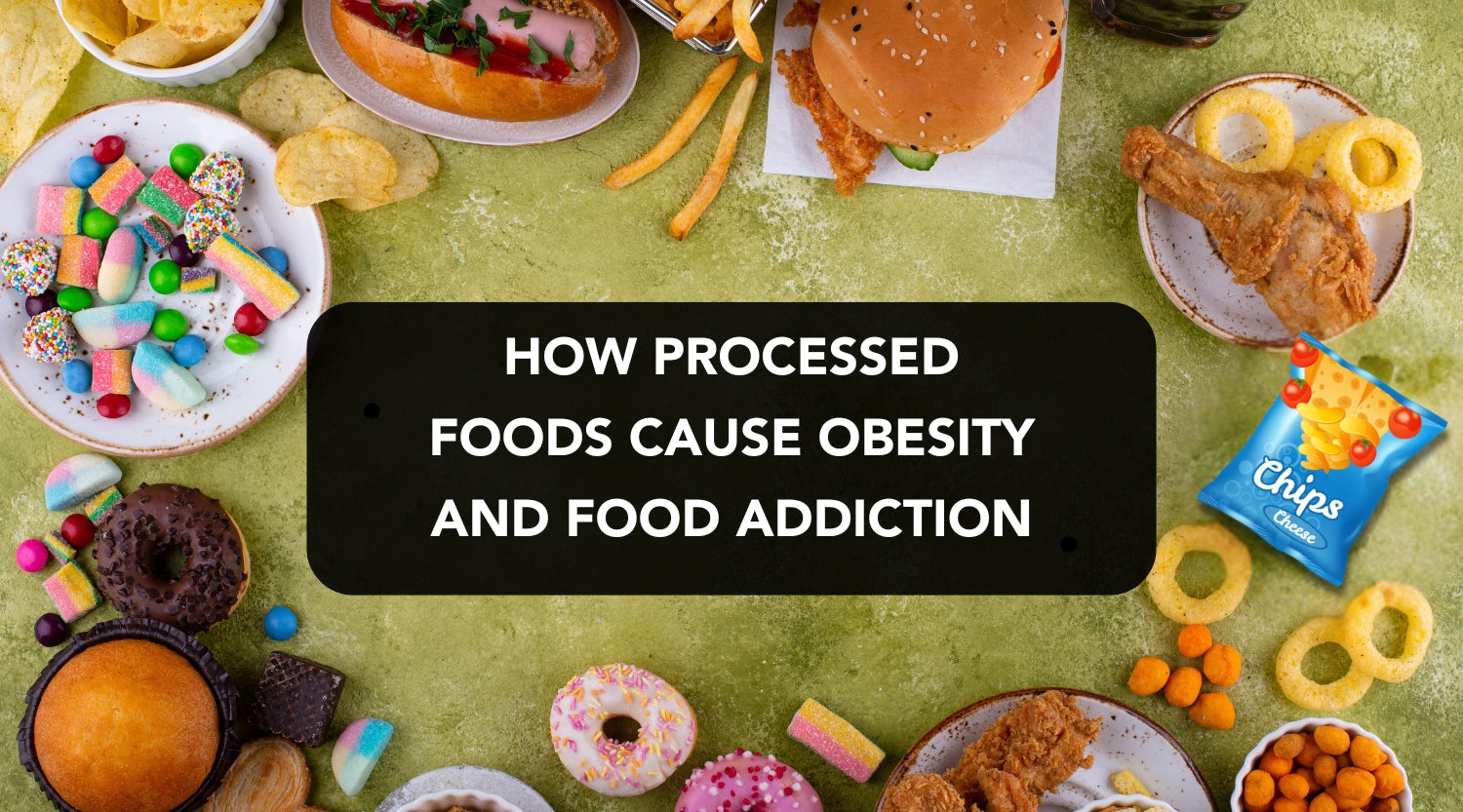
Uncovering the Hidden Dangers: How Processed Foods Trigger Food Addiction and Contribute to Obesity
The Rise of Obesity and Food Addiction: The Processed Food Connection
The Science Behind Food Addiction and Processed Foods
The link between processed foods and food addiction is rooted in science. Studies show these foods can act like drugs in our brains. They often have high levels of sugar, fat, and salt. These can trigger pleasure centers, like addictive substances do. Over time, our brains may crave these feelings. This can lead to a cycle of addiction. As we eat more processed foods, the risk of obesity increases. This is because such foods are high in calories but low in nutrients. They also make us feel less full, leading us to overeat. The science is clear. There is a strong connection between processed foods, food addiction, and obesity.
How Processed Foods Contribute to Obesity
Processed foods are often high in calories and low in nutrients. This can cause weight gain. They are designed to be tasty and hard to resist, leading to overeating. Many such foods have added sugar, fats, and salt, which can lead to obesity. The convenience of these foods also makes it easy to eat them often. This contributes to a higher calorie intake and weight gain. To avoid obesity, it's key to understand how processed foods affect our health.
The Role of Food Addiction in the Obesity Epidemic
The link between food addiction and obesity is clear. Addictive elements in processed foods can hook our brains. Just like tobacco or alcohol, these foods can lead to cravings. The more we eat, the more we want. It's a vicious cycle. This answers part of why obesity rates are up. Understanding this link is key in fighting the epidemic. By knowing how addiction works, we can better tackle obesity.
Processed Foods and Their Impact on Health: A Deeper Look
The Nutritional Content of Processed Foods
Processed foods often lack key nutrients found in whole foods. They can have added sugars, fats, and salt. These additives may increase caloric intake without offering nutritional benefits. Many processed foods are low in fiber and essential vitamins. This can lead to imbalances in our diet. Over time, this may contribute to health issues such as obesity and heart disease. It's important to check the labels for nutritional content.
The Effect of Processed Foods on Consumer Health
Processed foods often lack essential nutrients. They tend to be high in unhealthy ingredients like trans fats, salt, and sugars. These can lead to chronic health issues such as heart disease, diabetes, and obesity. Over time, consuming processed foods can decrease overall health and wellbeing.
Examples of Highly Processed and Health-Harming Foods
Processed foods, often labeled as convenience items, hide numerous health risks. Common examples include sugary drinks, ready-to-eat meals, and packaged snacks. These foods typically have high sugar, fat, and sodium levels but lack essential nutrients. Frequent consumption is linked to health issues like heart disease and diabetes. Additionally, fast food and frozen desserts contribute to the problem. Limiting these foods is key to better health and weight.
Strategies to Combat Obesity and Food Addiction Involving Processed Foods
Educating Consumers on Healthier Eating Habits
To fight obesity and food addiction, we need to teach people about healthy eating. This includes knowing which foods are good for us and which aren't. We must learn how food impacts our health. Cooking at home is one way to eat better. We should know how to read food labels too. It helps us choose less processed options. Schools can help by teaching kids about nutrition early on. Public campaigns can also show the benefits of whole foods over processed ones.
Reducing the Demand for Processed Foods
- Understand Consumer Behavior: Grasp why people choose processed over healthy options.
- Educational Campaigns: Spread awareness about processed food dangers.
- Promote Whole Foods: Encourage eating fresh fruits, vegetables, and whole grains.
- Labeling Reforms: Make food labels simpler and more informative.
- Subsidies for Healthy Foods: Make healthier food options more affordable.
- Community Support Programs: Create groups that support healthy eating habits.
- Cooking Workshops: Teach people easy, healthy cooking methods.
Policy Changes and Their Effect on Processed Food Availability
Policy changes can shape consumer choices and curb obesity. They can limit processed food access. Examples of these changes include:
- Taxes on Sugary Drinks: These can reduce soda consumption.
- Nutritional Labeling Laws: Clear labels can help people make better food choices.
- Zoning Regulations: These can limit fast-food outlets near schools.
- Subsidies for Healthy Foods: Making fruits and veggies cheaper can shift buying habits.
Such policies can drive demand for nutritious foods and cut obesity rates.
Share
